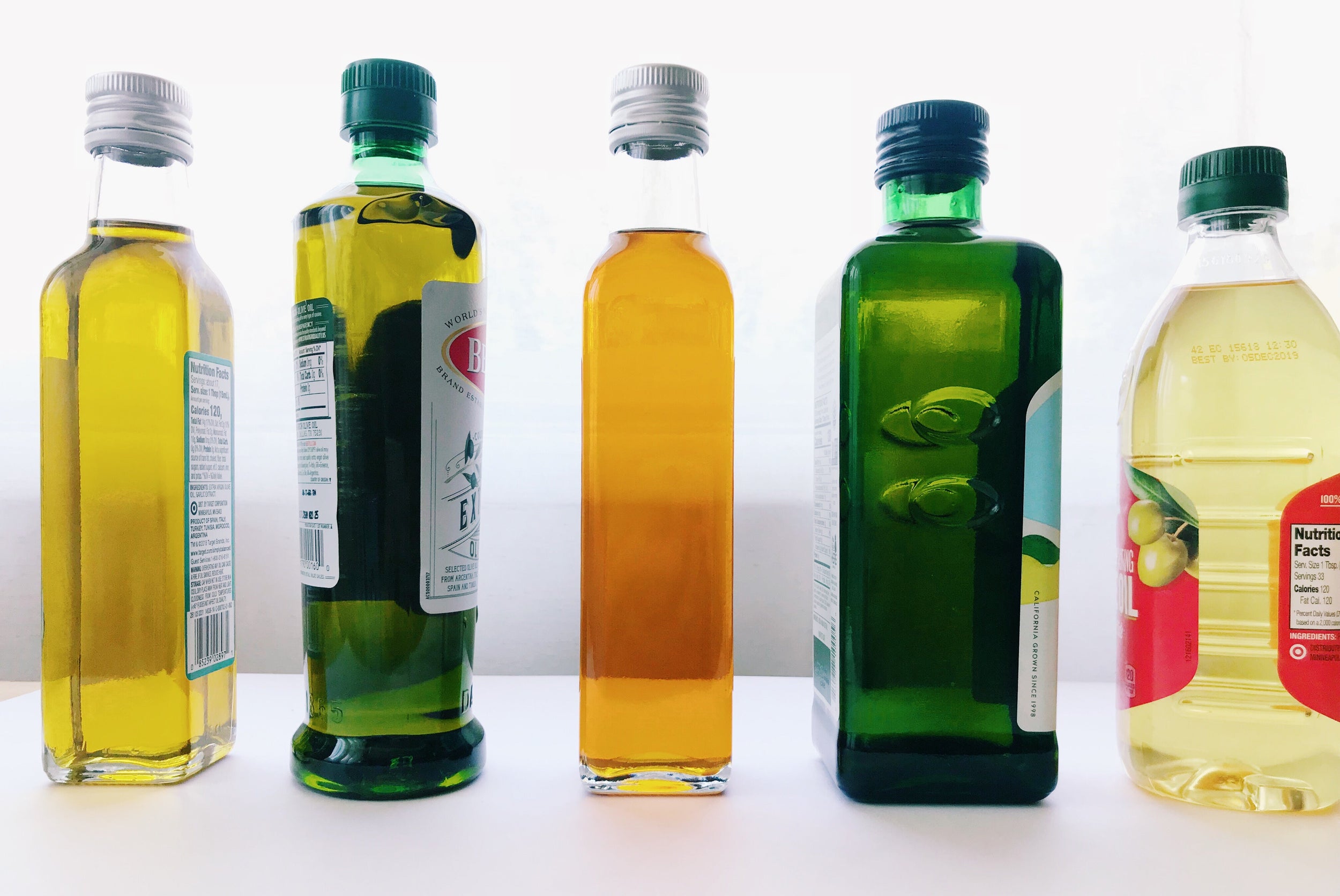The Fraud in Your Pantry: Exposing Fake Olive Oil
Authors:

Dr. Thomas Wnorowski
PhD, CNCC Research Director, BodyBio & Biomedical Nutritionist
If you’re a health-conscious person who loves to cook, you’ve probably got a bottle of extra virgin olive oil in your kitchen. Touted as a “healthy fat,” and a staple ingredient of the popular Mediterranean diet, olive oil has many benefits: it contains polyphenols and other antioxidants that help fight bad LDL cholesterol, lower blood pressure, prevent inflammation and oxidation, and reduce the risks for certain cancers. But if you got that EVOO from your local grocery store, you’re likely a victim of one of the biggest food scams in the industry today. Only 2% of the world’s olive oil qualifies as EVOO, and over 70% of what we buy is fake. You may or may not know about this fraudulent practice, which first gained widespread attention in 2011 when journalist Tom Mueller published his exposé, Extra Virginity: The Sublime and Scandalous World of Olive Oil. But in spite of increased awareness and more consumer protections, unethical practices and deceptive marketing in olive oil is still a huge problem. Here’s what you need to know.
If it looks like olive oil and sounds like olive oil—it’s probably a marketing gimmickTo feather their nests and line their pockets, unscrupulous investors and businessmen started purchasing olive orchards, using them as a front to appear authentic and cash in on the lucrative industry with a projected value of over $11 billion by 2022. Even the Italian Mafia is in on it. They don’t produce pure olive oil; rather, they dilute the product by mixing it with flavorless, cheap nut oils from countries east of the Ionian Sea and North Africa, as well as fresh—and sometimes not-so-fresh—olive juice. To really sell it, these scammers made some clever branding decisions to further disguise their illegitimacy: deflecting our attention with portraits of supposed Mediterranean patriarchs on their labels, complete with fabricated surnames. You’d never guess that Filippo Berio is Chinese now, would you?Most EVOO isn’t just fake. It’s harmful.In their natural states, both pure olive oil and pure nut oils are sources of “healthy fats.” The Omega-9 fatty acids in olive oil offer cardiovascular benefits, while the omega-6s and omega-3s found in nuts are vital to cell membrane fluidity. But all of this is negated when the two are mixed, thanks to high-heat and solvent extraction methods that compromise the chemical structure of their fatty acid chains. Combined with careless packaging and storage methods, the resulting product is imbalanced, harmful to cell membranes, and by extension, harmful to our organs. And that’s to say nothing of the potentially fatal allergy risks for unlabeled products that may contain nut and seed oils.American palates are being dupedThanks to the popularity of the Mediterranean diet, most consumers are aware that olive oil is good for them; they are less aware that the product they’re buying isn’t delivering any of the benefits. The commercial olive oil industry has figured out where to cut corners. When it comes to marketing olive oil to Americans, conglomerates are relying on a simple European assumption: we can’t tell the difference. It’s not a staple of our diets like it is for the Greeks and Italians, who consume 10 to 20 times more of it than we do. They know Americans are less familiar with what good olive oil tastes like, so they sell us a sham. We buy the sham, trusting that it’s the same product we’ve been told is good for us. And because real olive oils are more expensive and harder to come by, we often never taste the real thing. And on and on it goes. But suppose you’ve gotten wise to their tricks.The “Refrigerator Test” won’t help youA popular theory surrounding olive oil is to test its legitimacy by chilling or freezing it. The idea is that an adulterated EVOO is more likely to have been “winterized”—a process that filters out waxes from the olives—and will form a hard block when frozen. However, this is not a failsafe endeavor. All fats will harden when sufficiently chilled, including pure olive oils. Olives and other fruits are naturally waxy to prevent attack by pathogens and to provide a barrier against moisture loss; some are waxier than others depending on the climate where they were grown. So it’s just as likely that a winterized oil and a pure oil will behave the same when exposed to cold temperatures. However, there are other things you can look out for.Forget the brand packaging and study the labelsThere are many ways to tell if an olive oil is genuine, thanks to the efforts of small growers and government regulators who want to maintain purity standards. Real olive oil is incredibly complex, and like wine, has many nuances of flavor. Here are some things to look out for:
Don’t give up on EVOOBetween the blatant corruption and the high price tag, you might be tempted to throw in the towel on EVOO and choose an alternative, like corn oil. Don’t do it! While the corn industry markets its oil’s ability to lower LDL cholesterol, thanks to its high volume of plant sterols, it doesn’t prevent the oxidation of LDL, which is the real problem. Corn oil also lacks the disease-preventing antioxidants that olive oil has. This is one of the main reasons why olive oil outperforms most alternatives; it has a natural ability to make good HDL cholesterol work harder and longer at fighting LDL. It takes about five months for real Italian or Greek olive oil to reach our shores after the olives have been picked and pressed. Once you taste it and experience that little tingle at the back of your throat, you’ll know what real olive oil is—and your body will start to know these real health benefits. The next time you hit the oil and vinegar section of your local grocery story, check the labels and spring for the good stuff. Your body will thank you. |
Wang H, Sit WH, Tipoe GL, Wan JM.
Differential protective effects of extra virgin olive oil and corn oil in liver injury: a proteomic study.
Food Chem Toxicol. 2014 Dec;74:131-8. doi: 10.1016/j.fct.2014.09.002. Epub 2014 Oct 7.
Escrich E, Solanas M, Moral R.
Olive oil and other dietary lipids in breast cancer.
Cancer Treat Res. 2014;159:289-309. doi: 10.1007/978-3-642-38007-5_17.
Pampaloni B, Mavilia C, Fabbri S, Romani A, Ieri F, Tanini A, Tonelli F, Brandi ML.
In vitro effects of extracts of extra virgin olive oil on human colon cancer cells.
Nutr Cancer. 2014;66(7):1228-36.
Giuseppe Grosso, Silvio Buscemi, Fabio Galvano, Antonio Mistretta, et al
Mediterranean diet and cancer: epidemiological evidence and mechanism of selected aspects
BMC Surg. 2013; 13(Suppl 2): S14.
Menendez JA, Vazquez-Martin A, Oliveras-Ferraros C, Garcia-Villalba R, et al
Analyzing effects of extra-virgin olive oil polyphenols on breast cancer-associated fatty acid synthase protein expression using reverse-phase protein microarrays.
Int J Mol Med. 2008 Oct;22(4):433-9.
https://www.kitchenambition.com/does-olive-oil-go-bad
http://www.oliveoiltimes.com/opinion/corn-oil-lowers-cholesterol/42051
https://www.oliveoilsource.com/competitions
http://www.extravirginity.com/great-oil/how-to-buy-great-olive-oil/
https://goop.com/wellness/health/the-heartbreak-of-global-olive-oil-fraud-and-what-to-do-about-it/

